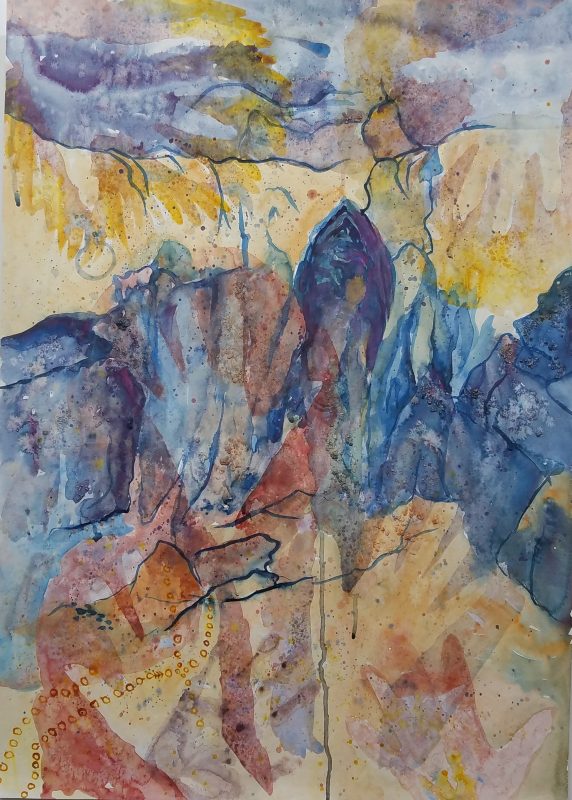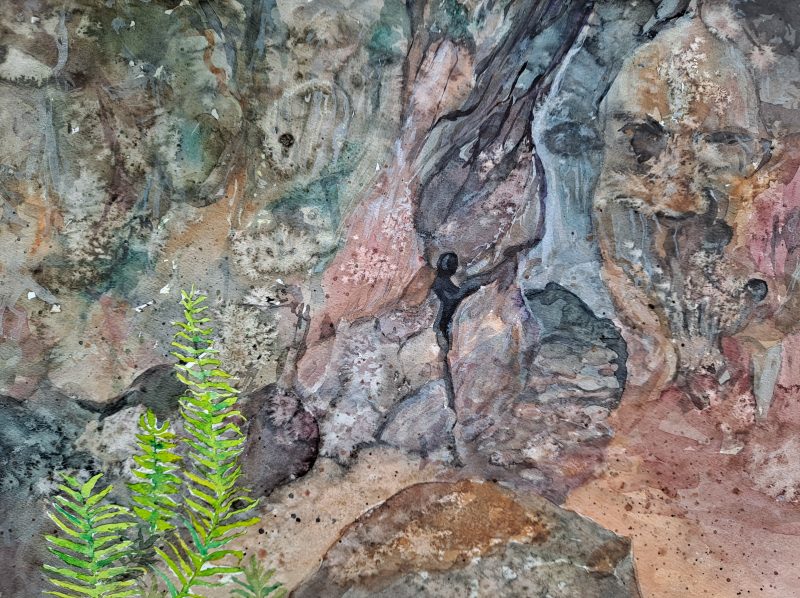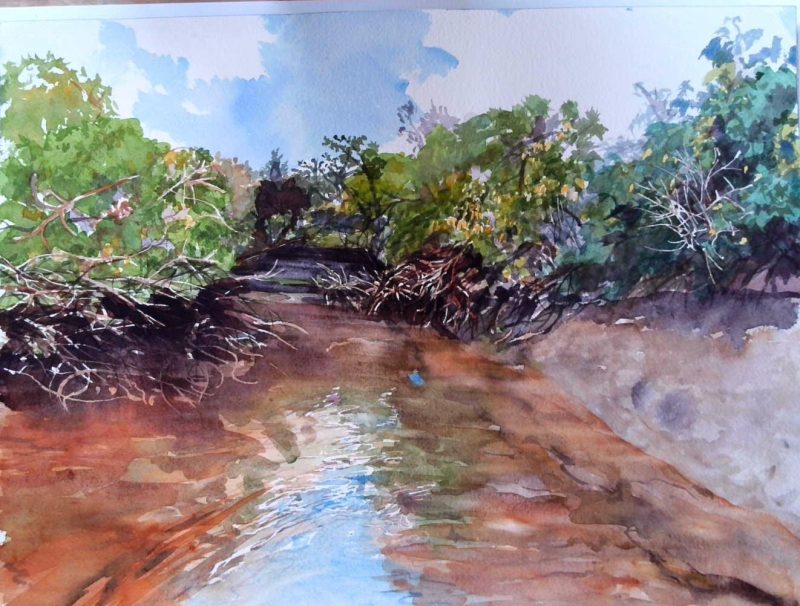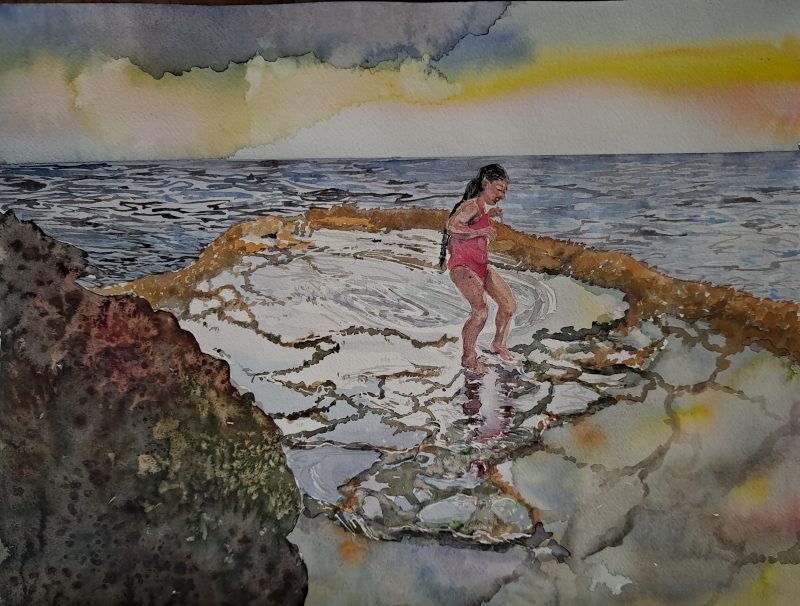Mākua to Kahanahāʻiki is the area past ʻOhikilolo, basically I count it from Mākua cave to the west end of the Mākua valley, which is called Kahanahāʻiki. This cave is known as the Cave of the First Mother of the original Hawaiian settlers of this area. Their main starch was not the kalo or taro root, but rather the ʻuala, the sweet potato. This cave was desecrated by the US military during WWII when they dynamited the opening to make it more useful in storing or protecting military equipment. You can see the scars of the face ripped away today just as clearly as you can see some of the holes made by Capt. James Cookʻs cannons in Kealakekua Bay on the Big Island of Hawaiʻi. Today, unmistakable from the roadside, many tourists and locals stop by and venture inside and take photos from the lookout towards Kaʻena. However, many miss the hidden gem of a beach below.
Jan Becketʻs photography focused more on the mauka areas of the ahupuaʻa and wahipana, while I spent most of my time along the coastline. He has been photographing much longer than I have, many more stories he has heard, can share. Some of it is collected in a book. Pana Oahu: Sacred Stones, Sacred Land.
When you enter, it isnʻt hard to see why it was called the Cave of the First Mother, her spine is suspended above like a gothic cathedral vault, with two smaller caves going back as her legs. Deeper still in the right hand side, there are flat stones and a cave within a cave, within a cave.
What I find hard to see and understand is when I come to visit and find rubbish left inside her. Rotten fruit or flowers, graphitti, empty water bottles and candy wrappers. There are places where offerings are made, but this is not one of them, unless you intend to come back often enough to clear away the rubbish and place new fresh offerings. Most tourists, by definition, wonʻt, because they wonʻt be coming back. Other religions and cultures, such as Japanese, tend their graves by keeping them washing and keeping them clean. No religion I know of, including Christianity, thinks it is ok to leave garbage or neglected altars where worshippers come to pray for life.
Ancient peopleʻs stories have an affinity to the fern which existed for millions of years before the first flowering plants. The fern was one of the first colonizers on Hawaiʻi and the original people who settled the islands also were closely identified with the fern. You can see some if you look up. Stories told in caves thousands of years ago in old languages, and maybe before language, pictures from tens of thousands of years ago. These paintings reflect my sense of the eons old connection of life beginning in new places.










Passing Kaneana cave is the area Kulaʻilaʻi in the Kahanahaʻiki area where the Mākua valley opens up. Mists float down out of the valley over the long white sand beach. One particular area is where a moʻo is said to protect the waters leading out to the sea and indeed the stream comes out from Mākua valley out to the beach. The beach is protected by a huge boulder with a lava tube to its left and pools at the watersʻ edge. Waves can get pretty big but children can safely bath or even hide behind the boulder as the water crashes against it. A little further along, this beach always has polished black kukui in strands at the watersʻ edge adorning the neck of the sea.